Transform Your Today
Discover how Artworks ADU can help you expand your home with an expertly crafted Accessory Dwelling Unit (or ADU). Our custom tailored home enhancement solutions ensure quality and efficiency, meeting your unique needs.
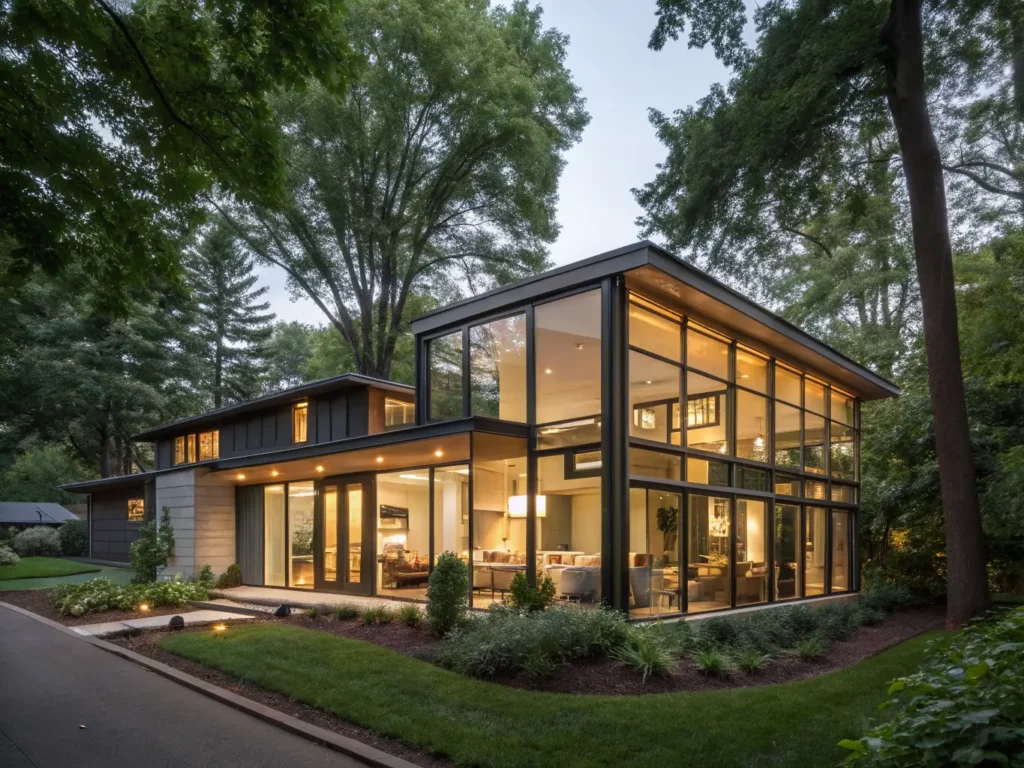
Explore Our Custom Construction Services
At Artworks ADU, we specialize in creating Accessory Dwelling Units that perfectly fit your needs, but having our roots in custom remodels and custom flooring means you can count on us for those important home updates too! Our services include comprehensive design and construction, ensuring high-quality craftsmanship and efficient project management. With our pre-approved ‘Fast Track’ floorplans, we streamline the development process, making it easier for you to expand your living space in California.
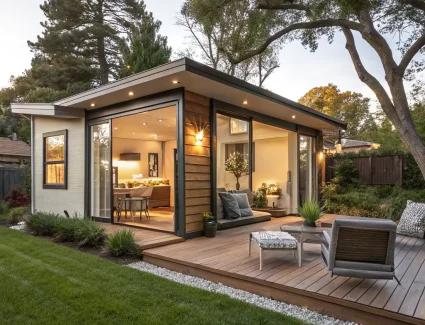
Custom Tiny Homes
(Detached ADU's)
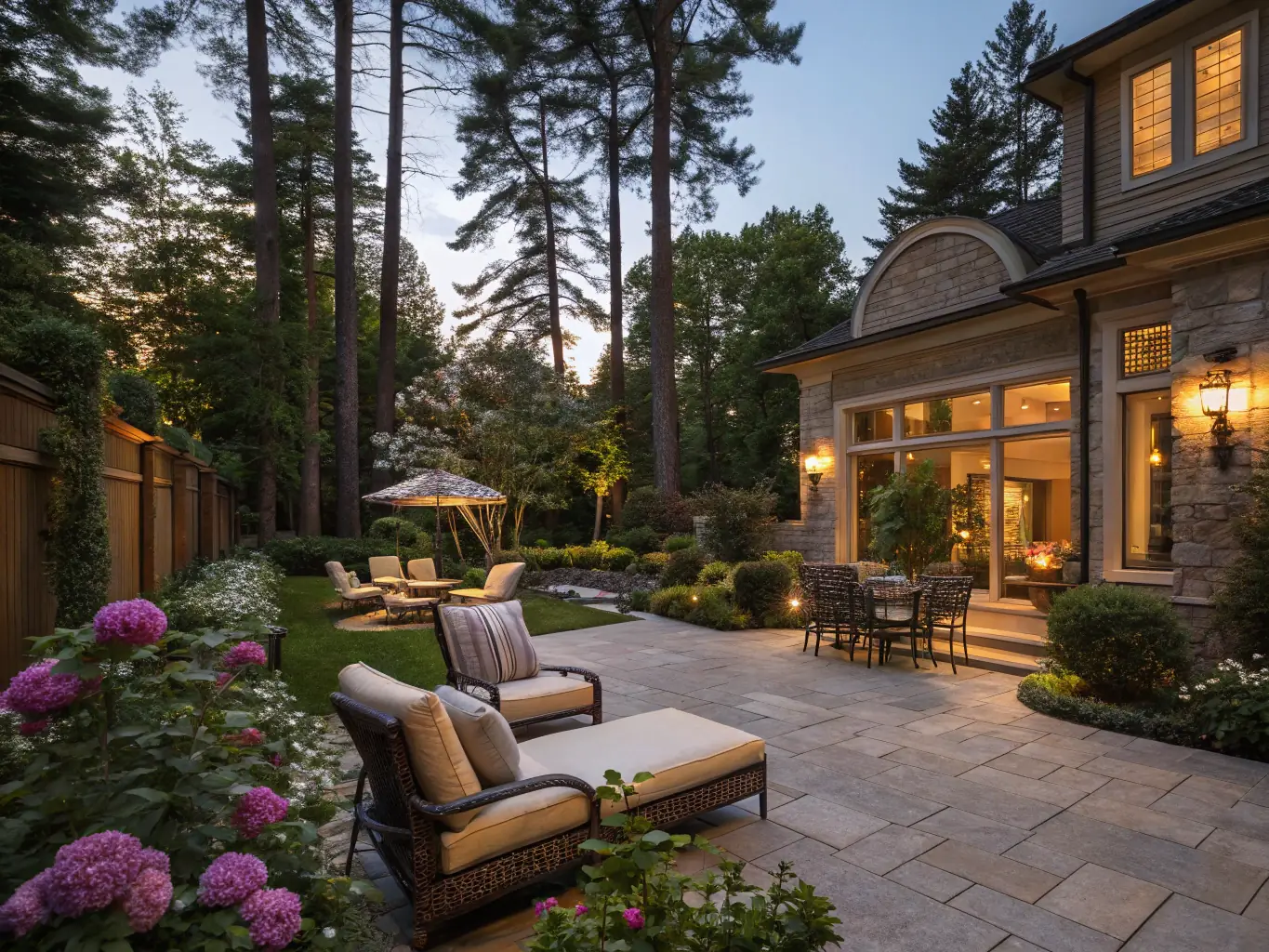
Custom Home Additions (Attached ADU's)

Custom Garage Conversions (Junior ADU's)

Custom Home Remodels

Custom Flooring Updates

Custom Accessibility & Sustainable Living Updates
Explore Our Pre-Approved Floorplans

Modern Open Living Space
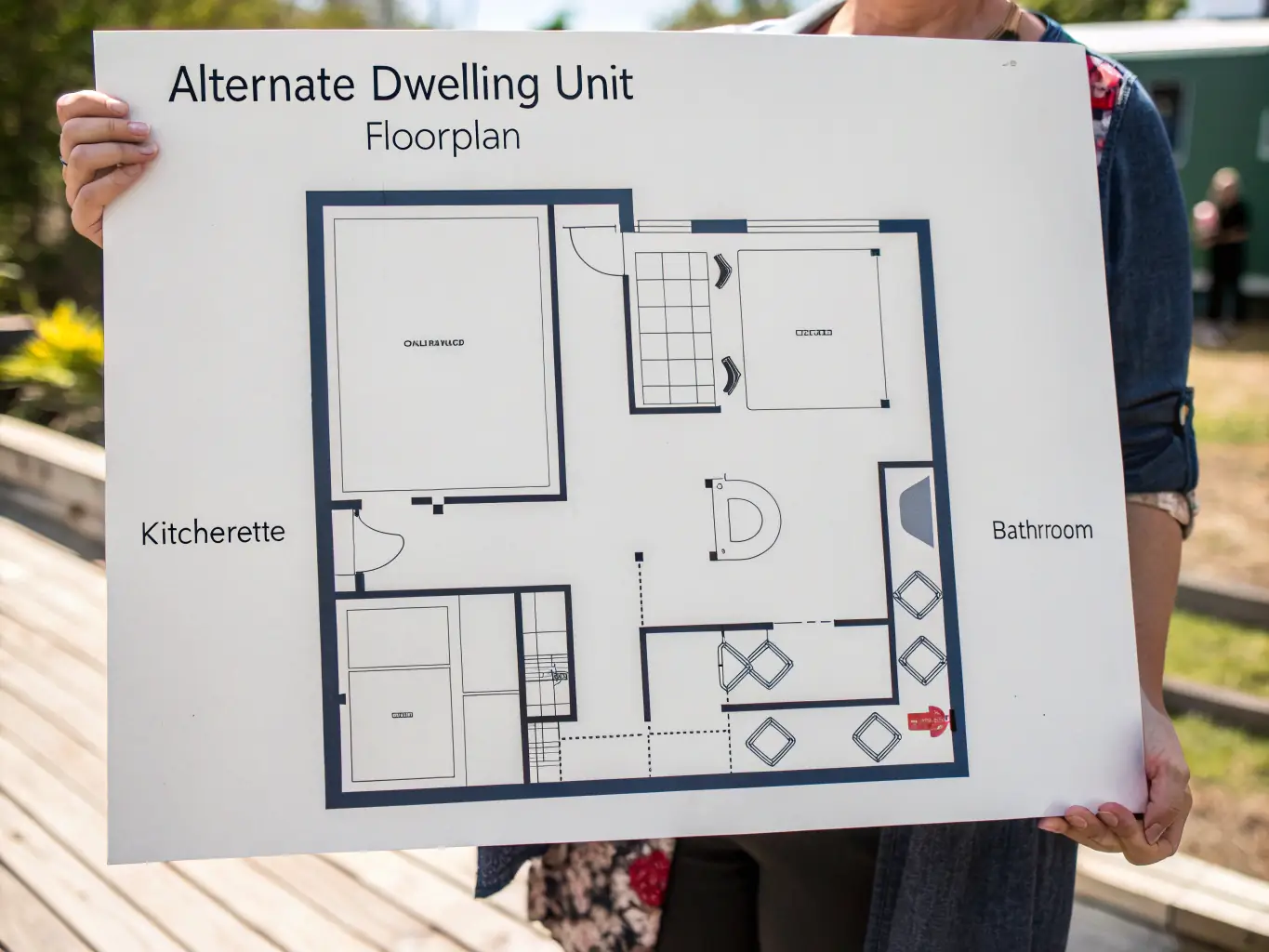
Cozy Backyard Retreat
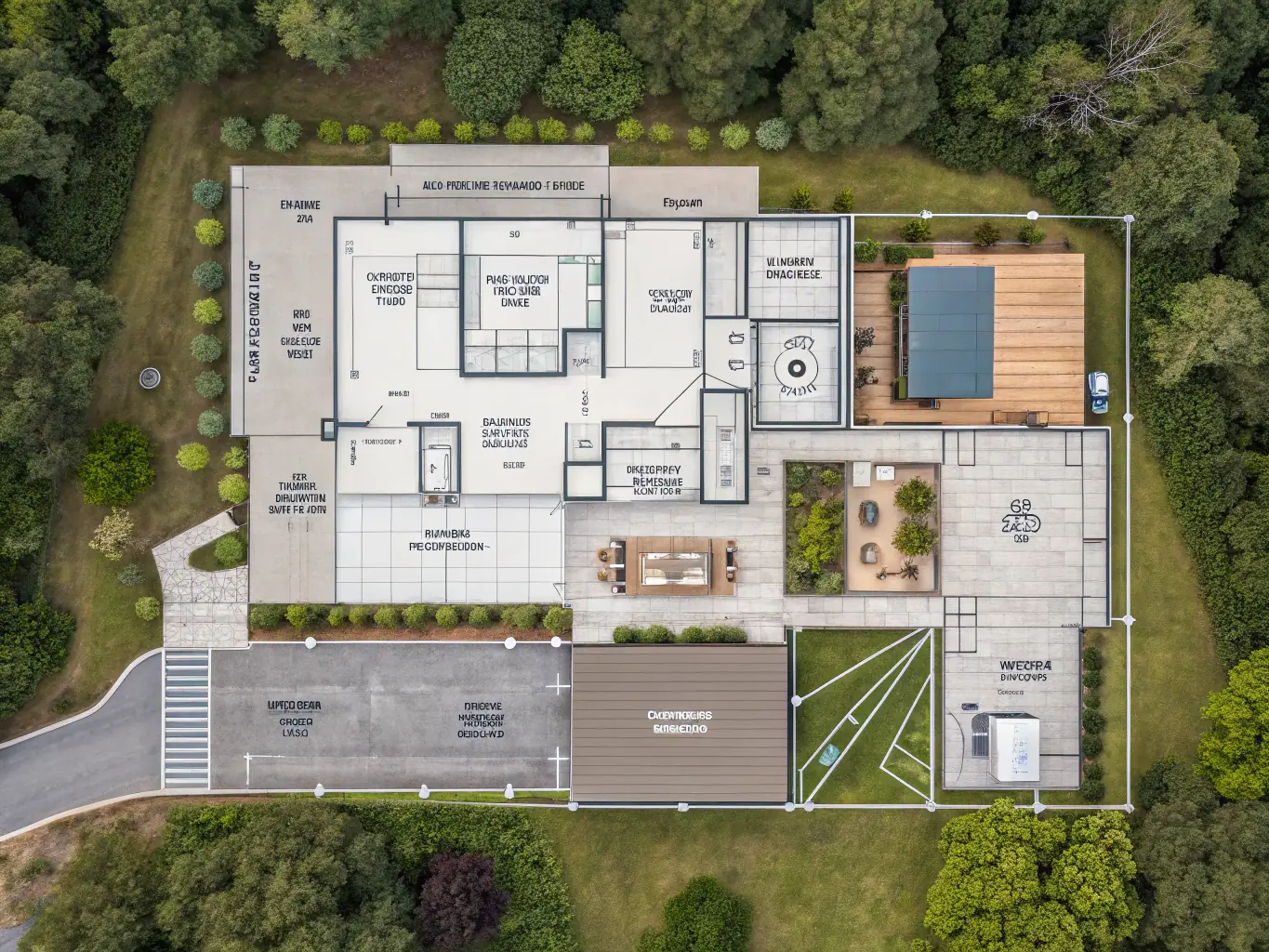
Sustainable Living Design
Our Recent Projects
What Our Clients Say






FAQs
What is an Accessory Dwelling Unit (ADU)?
An Accessory Dwelling Unit (ADU) is a secondary housing unit on a single-family residential lot. ADUs can be detached structures (such as backyard cottages), attached to the primary residence (like a converted garage or basement), or Junior ADUs (JADUs) created within the walls of the main house. ADUs have complete independent living facilities including a kitchen, bathroom, and sleeping area, and can be used for family members, caregivers, or rental income.
Why should I consider building an ADU on my property?
Building an ADU offers numerous benefits including:
- Creating additional rental income to help offset mortgage costs
- Providing housing for family members or caregivers while maintaining privacy
- Increasing your property value
- Contributing to housing solutions in the Bay Area’s tight market
- Utilizing your property more efficiently
- Creating multi-generational living opportunities
- Potential tax benefits from rental income (consult with a tax professional)
- Supporting California’s efforts to address the housing shortage
What types of ADUs can I build in the Bay Area?
In the Bay Area counties we serve (Alameda, San Mateo, Santa Clara, and San Francisco), you can generally build:
- Detached ADUs: Standalone structures separate from the main house
- Attached ADUs: Connected to the primary residence
- Conversion ADUs: Created by converting existing space (garage, basement, etc.)
- Junior ADUs (JADUs): Smaller units (up to 500 sq ft) created within the walls of the main house
How much does it typically cost to build an ADU in the Bay Area?
ADU costs in the Bay Area typically range from $300 to $500+ per square foot, depending on various factors:
- Type of ADU (detached, attached, conversion)
- Size and design complexity
- Site conditions (slope, access, soil type)
- Finishes and fixtures quality
- Utility connections required
- Permitting and impact fees
- Current construction market conditions
For a standard 500-800 sq ft detached ADU, total costs typically range from $200,000 to $400,000+. Conversion ADUs are generally less expensive, while custom high-end ADUs can exceed these estimates.
How long does it take to build an ADU?
The timeline for an ADU project typically includes:
- Planning and design: 1-3 months
- Permitting: 2-6 months (varies significantly by municipality)
- Construction: 4-8 months
- Final inspections and occupancy: 2-4 weeks
Total timeline: Typically 8-18 months from concept to completion, though this can vary based on municipality, project complexity, and current permitting backlogs.
What are the size limitations for ADUs in the Bay Area?
Size limitations vary by county and municipality, but generally:
- Detached ADUs: Up to 1,200 sq ft in most jurisdictions (Beware of potential City “Impact Fees” for ADU’s over 750 sq ft!)
- Attached ADUs: Up to 50% of the primary dwelling’s living area or 1,200 sq ft (whichever is less)
- JADUs: Maximum 500 sq ft
California state law mandates that local jurisdictions must allow ADUs of at least 800 square feet and 16 feet in height, regardless of local zoning restrictions.
Can I build an ADU if my lot is small?
Yes, California state law has eliminated minimum lot size requirements for ADUs. However, the ADU must still comply with setback requirements and lot coverage limitations. In many cases, conversion ADUs (like garage conversions) or JADUs may be ideal solutions for smaller lots.
Do I need to provide parking for my ADU?
Recent California legislation has significantly reduced parking requirements for ADUs. Generally, no additional parking is required if:
- The ADU is located within a half-mile of public transit
- The ADU is located within a historic district
- The ADU is part of an existing primary residence or accessory structure
- On-street parking permits are required but not offered to the ADU occupant
- A car-share vehicle is located within one block of the ADU
Local jurisdictions may have specific variations, so it’s important to check with your municipality.
How can I prepare my property for ADU construction?
Helpful preparation steps include:
- Gathering property documents (survey, title report, existing plans)
- Documenting existing utility locations
- Clearing the construction area of personal items
- Trimming vegetation that might impede access
- Informing neighbors about upcoming construction
- Securing valuable or fragile items that might be affected by vibration
- Making arrangements for pets during critical construction phases
- Planning for temporary disruptions to utilities
- Establishing a communication protocol with your contractor
- Setting realistic expectations for the construction timeline
Artworks ADU provides detailed pre-construction guidance to help you prepare effectively.
What are the key differences in ADU regulations between Alameda, San Mateo, Santa Clara, and Contra Costa Counties?
Check out our Resources Page for more California State and County ADU information!
While California state law provides a baseline for ADU regulations, there are important differences between counties:
Alameda County:
- Allows both standard ADUs and JADUs in residential zones
- JADUs permitted only in R-1 (Single-Family Residence) zoning districts
- Owner occupancy required for properties with JADUs
- Impact fees may apply depending on ADU size
San Mateo County:
- Ministerial approval process for compliant ADUs (building permit only)
- No minimum lot size requirements
- Detached ADUs limited to 1,200 square feet
- Special considerations for coastal zone properties
Santa Clara County:
- Streamlined approval process for qualifying ADUs
- Allows multiple ADUs on multi-family properties
- Specific design guidelines to ensure neighborhood compatibility
- Reduced fees for ADUs under certain size thresholds
San Francisco County:
- Unique requirements for historic districts
- Specific height limitations based on neighborhood context
- Accelerated approval process for certain ADU types
- Special provisions for rent-controlled properties
What specific building challenges should I be aware of in Alameda County?
Check out our Resources Page for more California State and County ADU information!
Alameda County presents several unique challenges for ADU construction:
- Soil Conditions: Many areas in Alameda County have expansive clay soils that can require more extensive foundation systems, potentially adding $10,000-$30,000 to construction costs.
- Seismic Considerations: Being in a high seismic risk zone, Alameda County enforces strict seismic safety requirements that may necessitate additional structural elements, increasing costs by 5-15%.
- Historic Districts: Cities like Berkeley and Oakland have numerous historic districts with additional design review requirements that can extend the permitting timeline by 2-4 months and increase design costs.
- Utility Capacity Issues: Older neighborhoods may have undersized utility infrastructure, potentially requiring costly upgrades to water, sewer, or electrical systems ranging from $5,000-$25,000.
- Tree Preservation Ordinances: Alameda County has strict tree preservation requirements that may limit buildable area or require costly arborist reports and protection measures during construction.
Artworks ADU has extensive experience navigating these challenges in Alameda County, helping minimize their impact on your project timeline and budget.
What specific building challenges should I be aware of in San Mateo County?
Check out our Resources Page for more California State and County ADU information!
San Mateo County presents several unique considerations for ADU construction:
- Coastal Zone Regulations: Properties in the coastal zone face additional regulatory oversight from the California Coastal Commission, potentially adding 3-6 months to the approval process.
- Hillside Construction: Many San Mateo County properties are on hillsides, requiring specialized foundation systems and often geotechnical reports, which can add $15,000-$40,000 to project costs.
- Drainage Requirements: The county has strict stormwater management requirements, often necessitating retention systems that can add $5,000-$15,000 to construction costs.
- Fire Safety Zones: Properties in wildland-urban interface areas require specific fire-resistant construction methods and materials, potentially increasing costs by 10-20%.
- Airport Influence Areas: Properties near San Francisco International Airport may have height restrictions and additional noise insulation requirements, adding $5,000-$10,000 to construction costs.
Our team at Artworks ADU understands these San Mateo County-specific challenges and incorporates solutions into our planning and budgeting process from the start.
What specific building challenges should I be aware of in Santa Clara County?
Check out our Resources Page for more California State and County ADU information!
Santa Clara County presents several unique challenges for ADU construction:
- High Water Table: Many areas, particularly near the bay, have high water tables that can complicate foundation work and require specialized waterproofing, adding $8,000-$20,000 to construction costs.
- Solar Requirements: Santa Clara County has some of the strictest solar requirements in the state, potentially adding $10,000-$25,000 to project costs (though this can be offset by long-term energy savings and incentives).
- Design Review in Certain Areas: Some municipalities within Santa Clara County have design review requirements for ADUs visible from the street, potentially extending the permitting timeline by 1-3 months.
- Parking Variances: Despite state relaxation of parking requirements, some areas still present challenges with street parking that may require creative solutions or variances.
- School Impact Fees: Santa Clara County often has higher school impact fees than neighboring counties, potentially adding $5,000-$15,000 to project costs depending on ADU size.
Artworks ADU has developed specific strategies for addressing these Santa Clara County challenges efficiently and cost-effectively.
What permits do I need to build an ADU?
For a compliant ADU in the Bay Area, you’ll typically need:
- Building permit
- Electrical permit
- Plumbing permit
- Mechanical permit
- Grading/excavation permit (if significant site work is required)
- Encroachment permit (if work affects public right-of-way)
- Water/sewer connection permits (if new connections are required)
The approval process for ADUs that meet state and local standards is ministerial, meaning discretionary review is not required. This streamlined process helps reduce permitting time and uncertainty.
What are impact fees, and how much should I expect to pay?
Impact fees are charges assessed by local governments to offset the impact of new development on public infrastructure and services. For ADUs, these may include:
- School impact fees
- Park/recreation fees
- Transportation/traffic fees
- Utility connection fees
- Capital improvement fees
Recent California legislation has limited impact fees for ADUs smaller than 750 square feet and reduced fees proportionally for larger ADUs. Fees vary significantly by municipality but can range from a few thousand dollars to over $20,000. In some jurisdictions, certain impact fees may be waived entirely for affordable ADUs or those under specific size thresholds.
How do impact fees vary across the Bay Area counties, and how can I minimize them?
Impact fees can vary dramatically across the Bay Area counties we serve:
Alameda County:
- School impact fees range from $3.20-$4.08 per square foot
- Utility connection fees typically range from $5,000-$15,000
- Some cities offer reduced fees for ADUs under 750 square feet
San Mateo County:
- School impact fees range from $2.97-$3.79 per square foot
- Transportation impact fees in some cities can add $5,000-$10,000
- Coastal zone properties may face additional development fees
Santa Clara County:
- School impact fees are among the highest, ranging from $3.36-$4.79 per square foot
- Park impact fees can add $10,000-$20,000 in some municipalities
- Some cities offer fee waivers for affordable housing ADUs
San Francisco County:
- Impact fees are generally lower due to density but utility connection fees can be substantial
- Transportation sustainability fees may apply in certain areas
- Affordable housing requirements may apply to larger ADU projects
Strategies to minimize impact fees:
- Design ADUs under 750 square feet to qualify for reduced fees under state law
- Consider conversion ADUs (garage/basement conversions) which often have lower fees
- Explore affordable housing programs that offer fee waivers
- Time your application to take advantage of periodic fee reduction incentives
- Consider JADUs which typically have significantly lower fees
Artworks ADU stays current on all fee structures and incentive programs across the Bay Area, helping you minimize these costs whenever possible.
Do I need to live on the property if I build an ADU?
Owner-occupancy requirements vary:
- For properties with only a standard ADU (no JADU), there is generally no owner-occupancy requirement under current California law
- For properties with a JADU, the owner must live in either the primary residence or the JADU
- Some local jurisdictions may have additional owner-occupancy requirements or deed restrictions
It’s important to note that owner-occupancy requirements may change with future legislation, so consulting with a local ADU specialist is recommended.
Can I sell my ADU separately from my main house?
Currently, ADUs cannot be sold separately from the primary residence in California. They remain legally part of the same property. However, certain jurisdictions are exploring “lot split” provisions under Senate Bill 9 (SB 9) that may provide pathways to separate ownership in the future. Consult with a real estate attorney for the most current information on this evolving area.
Are there design requirements for ADUs?
Design requirements vary by jurisdiction but typically address:
- Height limitations (generally 16-25 feet depending on location)
- Setbacks from property lines (typically 4 feet from side and rear property lines)
- Architectural compatibility with the primary residence
- Privacy considerations for neighboring properties
- Entrance locations and orientation
- Window placement to minimize impact on neighbors
Artworks ADU can help navigate these requirements while creating a design that maximizes functionality and aesthetic appeal.
What are the utility requirements for an ADU?
ADUs typically require:
- Separate electrical service (either a separate meter or sub-panel from main house)
- Water connection (either shared with main house or separate connection)
- Sewer/septic connection
- Gas service (if applicable)
- Heating and cooling systems
- Internet/cable connections
Recent legislation prohibits utility providers from charging connection fees for ADUs that are converted within existing space or requiring separate utility connections for these conversion ADUs.
What are the key considerations when designing an ADU?
Important design considerations include:
- Maximizing space efficiency in a compact footprint
- Ensuring adequate natural light and ventilation
- Creating privacy for both the ADU and main house occupants
- Designing for accessibility if needed
- Optimizing energy efficiency
- Selecting durable, low-maintenance materials
- Incorporating storage solutions
- Planning for future needs and flexibility
- Ensuring compliance with building codes and local regulations
- Balancing aesthetics with functionality and budget
Should my ADU match the style of my main house?
While some jurisdictions require architectural compatibility with the primary residence, there’s often flexibility in design approach. Options include:
- Matching the main house style for a cohesive look
- Complementary design that harmonizes without exact matching
- Contemporary contrast that distinguishes the ADU as a separate structure
Artworks ADU can help you navigate local design requirements while creating an ADU that meets your aesthetic preferences and functional needs.
What are the most common challenges in ADU construction?
Common challenges include:
- Site constraints (slope, access, existing trees/structures)
- Utility connections and capacity issues
- Navigating varying interpretations of building codes
- Weather delays during construction
- Supply chain disruptions affecting material availability
- Unexpected conditions discovered during construction
- Coordinating with multiple subcontractors and inspectors
- Managing neighbor concerns during construction
Our experienced team at Artworks ADU anticipates these challenges and develops proactive solutions to minimize their impact on your project timeline and budget.
What site-related issues can significantly increase ADU construction costs?
Site conditions can dramatically impact ADU construction costs. Here are the most common site-related issues that can lead to unexpected expenses:
Sloped Lots:
- Sloped sites typically require additional excavation, retaining walls, and specialized foundations
- Cost Impact: $15,000-$50,000+ depending on slope severity
- Mitigation Strategy: Consider terraced designs or partially elevated structures that work with the natural topography
Poor Soil Conditions:
- Expansive clay soils, high water tables, or fill soil can require enhanced foundation systems
- Cost Impact: $10,000-$30,000 for engineered foundations or soil remediation
- Mitigation Strategy: Conduct soil testing early in the process to develop appropriate foundation designs
Limited Construction Access:
- Narrow side yards, fences, or mature landscaping can restrict equipment access
- Cost Impact: $5,000-$15,000 for manual labor, cranes, or specialized equipment
- Mitigation Strategy: Create a detailed site logistics plan and consider prefabricated components that require less on-site construction
Underground Utility Conflicts:
- Discovering unmarked utilities, old septic systems, or abandoned foundations during excavation
- Cost Impact: $3,000-$20,000 for rerouting utilities or removing obstructions
- Mitigation Strategy: Conduct utility surveys and ground-penetrating radar scans before excavation begins
Protected Trees:
- Many Bay Area municipalities have strict tree preservation ordinances
- Cost Impact: $5,000-$15,000 for arborist reports, protection measures, and potential design modifications
- Mitigation Strategy: Identify protected trees early and design around them when possible
Artworks ADU conducts thorough site assessments before providing estimates, helping identify these potential issues early in the process to avoid costly surprises.
What utility-related issues commonly create unexpected costs during ADU construction?
Utility connections often present unexpected challenges that can significantly impact ADU budgets:
Inadequate Electrical Service:
- Many older homes have 100-amp electrical service that cannot support an additional dwelling
- Cost Impact: $5,000-$15,000 for service upgrades, new panels, and utility coordination
- Mitigation Strategy: Electrical load calculations early in the design process can identify capacity issues
Sewer Line Problems:
- Old clay pipes, insufficient slope, or capacity issues in existing sewer laterals
- Cost Impact: $8,000-$25,000 for new sewer laterals or repairs to existing lines
- Mitigation Strategy: Camera inspections of existing sewer lines before finalizing plans
Water Pressure and Supply Issues:
- Insufficient water pressure or supply for an additional dwelling unit
- Cost Impact: $3,000-$12,000 for pressure boosters, larger supply lines, or separate meters
- Mitigation Strategy: Pressure testing and flow rate analysis during the planning phase
Gas Line Capacity and Routing:
- Existing gas lines may be undersized or poorly positioned for ADU connections
- Cost Impact: $2,500-$8,000 for new gas lines, meters, or conversion to all-electric systems
- Mitigation Strategy: Consider all-electric designs which often simplify utility connections
Internet and Communication Services:
- Extending reliable internet service to detached ADUs
- Cost Impact: $1,000-$3,000 for trenching, conduit installation, and service extensions
- Mitigation Strategy: Incorporate communication conduits in utility trenches during initial construction
Artworks ADU performs comprehensive utility assessments as part of our pre-construction process, helping identify and address these issues before they become costly problems during construction.
What permitting and regulatory issues typically cause the most significant delays and cost increases?
Navigating the permitting process can present unexpected challenges that impact both timeline and budget:
Zoning Interpretations and Variances:
- Local zoning officials may interpret regulations differently than expected
- Cost Impact: $3,000-$10,000 for redesigns, variance applications, or appeals
- Timeline Impact: 2-6 months of delays
- Mitigation Strategy: Pre-application meetings with planning departments to confirm interpretations
Plan Check Corrections:
- Multiple rounds of plan check corrections can significantly extend the permitting timeline
- Cost Impact: $2,000-$8,000 for architectural revisions and engineering updates
- Timeline Impact: 1-3 months of delays per round of corrections
- Mitigation Strategy: Working with designers and contractors familiar with local requirements
Unexpected Code Upgrades:
- Requirements to upgrade existing structures to current codes (especially in conversion ADUs)
- Cost Impact: $5,000-$30,000 depending on the extent of required upgrades
- Timeline Impact: 1-3 months for redesign and additional permitting
- Mitigation Strategy: Thorough inspection of existing structures before beginning the design process
Special District Requirements:
- Historic districts, wildfire zones, or flood zones may have additional requirements
- Cost Impact: $3,000-$20,000 for specialized materials, reports, or design features
- Timeline Impact: 2-4 months for additional approvals
- Mitigation Strategy: Identify all applicable special districts during initial feasibility assessment
Neighbor Objections:
- In some jurisdictions, neighbor notifications can lead to objections and hearings
- Cost Impact: $2,000-$8,000 for representation at hearings and potential redesigns
- Timeline Impact: 2-6 months of delays
- Mitigation Strategy: Proactive neighbor communication and design considerations that minimize impacts
Artworks ADU has established relationships with planning departments throughout the Bay Area and extensive experience navigating these regulatory challenges, helping minimize their impact on your project.
What construction-phase issues commonly lead to cost overruns in ADU projects?
Even with careful planning, certain issues during the construction phase can lead to unexpected costs:
Unforeseen Structural Conditions:
- Discovering dry rot, termite damage, or inadequate framing when opening walls
- Cost Impact: $5,000-$25,000 for structural repairs and reinforcement
- Mitigation Strategy: Thorough pre-construction inspections with limited destructive testing when appropriate
Weather-Related Delays and Damage:
- Extended rainy periods can delay construction and potentially damage exposed materials
- Cost Impact: $3,000-$10,000 for additional protection, repairs, and extended project timelines
- Mitigation Strategy: Careful project scheduling and robust temporary weather protection systems
Material Price Volatility:
- Sudden increases in material costs (as seen with lumber in recent years)
- Cost Impact: 5-20% increases in overall material costs
- Mitigation Strategy: Early material purchasing and allowance-based contracts with price escalation clauses
Subcontractor Availability:
- Delays in scheduling specialized subcontractors in busy construction markets
- Cost Impact: $2,000-$8,000 in extended general conditions and potential expediting fees
- Mitigation Strategy: Early subcontractor commitment and detailed project scheduling
Change Orders and Design Modifications:
- Client-requested changes during construction
- Cost Impact: Varies widely based on the nature and timing of changes
- Mitigation Strategy: Thorough pre-construction design development and material selections
Artworks ADU employs proactive project management techniques and transparent communication to minimize these issues and address them efficiently when they do arise.
How can I make my ADU environmentally sustainable?
Sustainable ADU features can include:
- Energy-efficient appliances and systems
- Solar panel installation
- High-performance insulation and windows
- Water-conserving fixtures and landscaping
- Sustainable or recycled building materials
- Passive solar design principles
- Energy storage systems
- Electric vehicle charging capability
- Smart home technology for efficient resource management
- Drought-resistant landscaping
Many of these features qualify for rebates or incentives, potentially offsetting their initial cost while reducing long-term operating expenses.
What are the advantages of working with a specialized ADU contractor like Artworks ADU?
Specialized ADU contractors offer:
- In-depth knowledge of local ADU regulations and permitting processes
- Experience navigating common ADU construction challenges
- Established relationships with local building departments
- Familiarity with space-efficient design principles
- Understanding of cost-effective construction methods for smaller structures
- Knowledge of financing options specific to ADUs
- Ability to anticipate and prevent common issues before they arise
- Streamlined processes developed specifically for ADU projects
- Portfolio of completed ADU projects demonstrating capability
Artworks ADU brings specialized expertise in Bay Area ADU construction, helping ensure your project proceeds smoothly from concept to completion.
What financing options are available for ADU construction?
Find ADU Financing Options by Renofi (our ADU Lending Partner)!
Financing options for ADUs include:
- Home equity loans or lines of credit (HELOCs)
- Cash-out refinancing of your primary mortgage
- Construction loans specifically for ADUs
- Renovation loans (such as FHA 203k or Fannie Mae HomeStyle)
- California Housing Finance Agency (CalHFA) ADU Grant Program
- Local government loan programs (available in some jurisdictions)
- Private loans from family members
- Contractor financing programs
The best option depends on your financial situation, home equity, credit score, and long-term plans for the ADU.
What are the pros and cons of different ADU financing options?
Each ADU financing option has distinct advantages and disadvantages:
Home Equity Loans/Lines of Credit (HELOCs):
- Pros: Quick approval, lower closing costs, flexible use of funds
- Cons: Variable interest rates (for HELOCs), requires sufficient home equity, typically higher interest rates than primary mortgages
- Best for: Homeowners with significant equity and strong credit who need quick access to funds
- Typical terms: 5-30 year terms, interest rates from 5-10% depending on credit and market conditions
Cash-Out Refinancing:
- Pros: Often lowest interest rates, potential tax benefits, single payment
- Cons: Resets the term of your primary mortgage, higher closing costs, longer approval process
- Best for: Homeowners planning to stay in their home long-term who can benefit from current mortgage rates
- Typical terms: 15-30 year terms, interest rates typically 0.5-1% higher than standard mortgage rates
Construction Loans:
- Pros: Specifically designed for building projects, can finance up to 100% of construction costs
- Cons: Higher interest rates, complex draw processes, typically converts to permanent financing after completion
- Best for: Larger ADU projects where other equity-based options aren’t sufficient
- Typical terms: Interest-only during construction (6-18 months) followed by conversion to permanent financing
Renovation Loans (FHA 203k, Fannie Mae HomeStyle):
- Pros: Can finance both purchase/refinance and renovation in one loan, government backing
- Cons: More paperwork, longer processing times, strict contractor requirements
- Best for: Combining ADU construction with home purchase or major renovation
- Typical terms: 15-30 year terms, rates slightly higher than standard mortgages
CalHFA ADU Grant Program:
- Pros: Up to $40,000 in grant funding (not a loan), no repayment required
- Cons: Limited availability, income restrictions, pre-development costs only
- Best for: Qualifying homeowners in the planning stages who meet income requirements
- Typical terms: Grant covers pre-development costs only, must be combined with other financing for construction
Local Government Programs:
- Pros: Below-market interest rates, flexible qualification requirements, potential for partial loan forgiveness
- Cons: Limited availability, often restricted to affordable housing uses, lengthy application processes
- Best for: Homeowners willing to rent ADUs at affordable rates or in targeted development areas
- Typical terms: Vary significantly by program
Artworks ADU can connect you with financial partners experienced in each of these options to help determine the best approach for your specific situation.
Are there any grants or financial assistance programs for building ADUs?
Check out our Resources Page for more California State and County ADU Grant information!
Yes, several programs exist:
- CalHFA ADU Grant Program: Provides up to $40,000 for pre-development costs
- Local jurisdiction programs: Some Bay Area cities offer grants or low-interest loans
- Affordable housing incentives: Available if the ADU will be rented at below-market rates
- Energy efficiency rebates: Available for incorporating sustainable features
- Housing Innovation Programs: Periodically offered through state and local initiatives
Availability and eligibility requirements change frequently, so consulting with an ADU specialist is recommended for the most current information.
What specific ADU grant and assistance programs are available in the Bay Area counties you serve?
Check out our Resources Page for more California State and County ADU Grant information!
Several financial assistance programs are available across the Bay Area counties we serve:
Alameda County:
- Alameda County ADU Incentive Program: Offers up to $10,000 in permit fee waivers for qualifying homeowners
- Berkeley ADU Pilot Program: Provides technical assistance and potential financing for income-qualified homeowners
- Oakland ADU Initiative: Offers pre-approved plans and expedited permitting to reduce costs
- Emeryville ADU Loan Program: Provides low-interest loans up to $50,000 for ADU construction with affordability requirements
San Mateo County:
- San Mateo County ADU Resource Center: Offers technical assistance, project management support, and potential financing options
- Home for All ADU Workbook: Provides guidance and resources for cost-effective ADU development
- Peninsula Clean Energy ADU Program: Offers rebates for all-electric ADUs with energy-efficient features
- Heart of San Mateo County Housing Assistance: Provides loans for ADUs with affordability covenants
Santa Clara County:
- San Jose ADU Ally Program: Offers pre-approved plans, technical assistance, and potential fee waivers
- Santa Clara County ADU Forgivable Loan Program: Provides loans up to $60,000 that may be partially forgiven if affordability requirements are met
- Sunnyvale ADU Fee Reduction Program: Offers reduced impact fees for ADUs under 750 square feet
- Mountain View ADU Interest Rate Buydown Program: Subsidizes interest rates on ADU construction loans
San Francisco County:
- San Francisco ADU Incentive Program: Waives certain fees and provides technical assistance
- MOHCD Small Sites ADU Program: Offers financial assistance for adding ADUs to small multi-family buildings
- SF Environment Energy Upgrade Rebates: Provides rebates for energy-efficient ADU construction
- SF Planning Department ADU Handbook: Offers resources and guidance for cost-effective ADU development
Statewide Programs:
- CalHFA ADU Grant Program: Provides up to $40,000 for pre-development costs
- California Energy Commission TECH Program: Offers rebates for all-electric ADUs
- California Solar Initiative: Provides rebates for solar installations on ADUs
- Self-Help Housing Programs: Offers assistance for homeowners willing to participate in construction
Eligibility requirements, funding availability, and program details change frequently. Artworks ADU stays current on all available programs and can help determine which options might be suitable for your specific situation.
What ongoing costs should I anticipate with an ADU?
Ongoing costs typically include:
- Property tax increase (based on the added value of the ADU)
- Insurance premium increases
- Utility costs (water, electricity, gas, sewer)
- Maintenance and repairs
- Landscaping and exterior upkeep
- Property management fees (if renting the ADU)
- Vacancy costs during tenant transitions
- Periodic updates and renovations
Many of these costs can be offset by rental income if you choose to rent out your ADU.
How does an ADU affect my property taxes?
Adding an ADU will typically increase your property taxes based on the value of the improvement. In California, under Proposition 13, your existing property maintains its tax basis, while only the ADU improvement is assessed at current market rates. The tax increase is generally much less than purchasing a separate investment property. Some jurisdictions offer temporary tax incentives for ADUs that provide affordable housing.
What is the return on investment (ROI) for an ADU in the Bay Area?
ADUs in the Bay Area typically offer strong ROI through:
- Rental income: Monthly returns of $2,000-$4,000+ depending on location and size
- Property value increase: Typically 60-100% of construction costs immediately reflected in home value
- Appreciation over time: Bay Area real estate historically appreciates faster than national averages
- Tax benefits: Potential deductions for rental expenses (consult a tax professional)
- Flexibility value: The option to use the space for family, work, or rental provides significant non-monetary value
Most Bay Area ADU owners recoup their investment within 5-10 years through rental income alone, with additional returns through property value increases.
Are there any tax incentives for building an ADU?
Potential tax benefits include:
- Depreciation deductions for rental ADUs
- Home office deductions (if using part of the ADU as a qualified home office)
- Energy efficiency tax credits for qualifying features
- Property tax exemptions for certain affordable housing ADUs (in some jurisdictions)
- Business expense deductions related to rental activities
Consult with a tax professional familiar with real estate investments to maximize available tax benefits.
Can I rent out my ADU?
Yes, ADUs can be rented out in all Bay Area counties. Recent California legislation has removed many previous restrictions on ADU rentals. However:
- Short-term rentals (less than 30 days) may be restricted in some jurisdictions
- Rent control ordinances may apply in certain municipalities
- JADUs may have specific rental restrictions in some areas
- Deed restrictions may apply if you received certain types of financial assistance
Artworks ADU can help you understand the specific rental regulations that apply to your property.
What should I consider when setting rental rates for my ADU?
When determining rental rates, consider:
- Local market rates for comparable units
- The ADU’s size, amenities, and condition
- Parking availability
- Privacy and separate access
- Utility inclusion or exclusion
- Furnished vs. unfurnished
- Lease term length
- Pet policies
- Your target tenant demographic
- Seasonal variations in rental demand
A property management professional can help you establish optimal pricing for your specific ADU and location.
What are the legal considerations when renting out an ADU?
Important legal considerations include:
- Compliance with fair housing laws
- Proper tenant screening procedures
- Written lease agreements
- Security deposit limitations
- Maintenance responsibilities
- Notice requirements for entry
- Local rent control ordinances
- Eviction procedures
- Tax reporting requirements
- Insurance coverage
Working with a real estate attorney to develop proper rental documents can help prevent costly legal issues.
Do I need special insurance for a rented ADU?
Yes, you should update your homeowner’s insurance policy to reflect:
- The additional structure
- Landlord liability coverage
- Loss of rental income protection
- Increased property value
- Additional personal property coverage (if furnishing the ADU)
Most insurance companies offer landlord policies or riders to standard homeowner’s policies that provide appropriate coverage for rental situations.
Check out our Resources Page for more information on specific ADU rental regulations!
Why choose Artworks ADU for my project?
Artworks ADU offers:
- Specialized expertise in ADU construction throughout Alameda, San Mateo, Santa Clara, and San Francisco Counties
- Comprehensive services from initial feasibility assessment through final construction
- In-depth knowledge of local regulations and permitting processes
- Established relationships with local building departments
- Custom designs tailored to your specific property and needs
- Transparent pricing and detailed project timelines
- Quality craftsmanship and attention to detail
- Ongoing support throughout the entire project
- Portfolio of successful ADU projects throughout the Bay Area
- Commitment to sustainable building practices
What is the process of working with Artworks ADU?
Our process includes:
- Initial Consultation: We assess your property, discuss your goals, and explain feasibility and options
- Site Analysis: We conduct a thorough evaluation of your property to identify opportunities and constraints
- Design Development: Our designers create custom plans tailored to your needs and property
- Permitting: We handle the entire permitting process, navigating local requirements
- Construction: Our experienced team builds your ADU with quality craftsmanship
- Inspections: We coordinate all required inspections throughout construction
- Final Walkthrough: We ensure everything meets our quality standards and your expectations
- Ongoing Support: We remain available for questions and support after project completion
How does Artworks ADU handle the permitting process?
Our permitting expertise includes:
- Preparing and submitting all required documentation
- Coordinating with various departments and agencies
- Tracking application status and responding to requests for information
- Attending meetings with building officials when necessary
- Addressing any compliance issues that arise
- Managing the timing of various permit approvals
- Scheduling and preparing for all required inspections
- Ensuring final sign-off and certificate of occupancy
Our established relationships with local building departments help streamline this often complex process.
Does Artworks ADU offer financing options?
While we don’t provide direct financing, we:
- Partner with lenders experienced in ADU financing
- Provide documentation needed for loan applications
- Offer payment schedules that align with construction milestones
- Can recommend financial advisors who specialize in real estate investments
- Stay informed about available grants and assistance programs
- Provide detailed cost estimates for your financing applications
Find ADU Financing Options by Renofi (our ADU Lending Partner)!
What warranties does Artworks ADU provide?
Our warranty coverage includes:
- 1-year comprehensive warranty on all workmanship
- 2-year warranty on systems (electrical, plumbing, HVAC)
- 10-year structural warranty
- Manufacturer warranties on all installed appliances and fixtures
- Written documentation of all warranty terms
- Responsive service for any warranty claims
- Regular maintenance recommendations to prevent issues
Where can I learn more about ADU regulations in my specific area?
Check out our Resources Page!
Other Helpful resources include:
- City/County planning department websites
- California Department of Housing and Community Development (HCD)
- Local ADU resource centers
- California ADU Network
- Bay Area ADU Task Force publications
- Municipal code sections related to ADUs
- Local architect and contractor associations
- ADU-specific educational workshops (offered in many Bay Area communities)
Artworks ADU stays current on all regulatory changes and can provide the most up-to-date information for your specific location.
How can I determine if my property is suitable for an ADU?
Schedule a Free ADU Project Consultation!
Key factors in ADU feasibility include:
- Zoning regulations for your specific property
- Lot size and configuration
- Existing structures and their condition
- Topography and drainage patterns
- Access for construction equipment
- Utility availability and capacity
- Setback requirements
- Tree preservation ordinances
- Neighborhood context and design guidelines
- Soil conditions and geological factors
Artworks ADU offers comprehensive site assessments to determine feasibility and identify the optimal ADU solution for your property.

